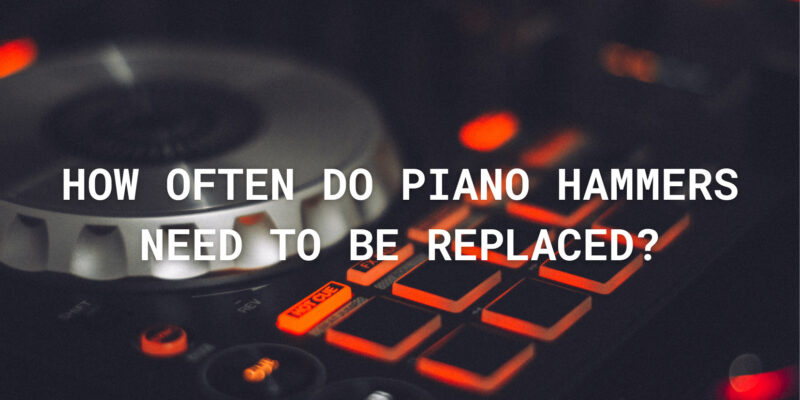The piano is an enduring and captivating musical instrument, cherished for its ability to produce a wide range of melodies, harmonies, and emotions. At the heart of the piano’s sound production lies a crucial component: the hammers. Over time, the hammers can experience wear and tear, affecting the instrument’s tone and playability. In this article, we will explore the factors that determine how often piano hammers need to be replaced and provide guidance for pianists on maintaining the health of their instrument.
Understanding Piano Hammers
Piano hammers are integral to the instrument’s sound production. When a pianist strikes a key, it triggers a mechanical process that involves the hammer striking the piano strings. The material, shape, and condition of the hammers play a significant role in determining the piano’s tone, volume, and overall sound quality.
Factors Affecting Piano Hammer Lifespan
Several factors contribute to the wear and tear of piano hammers:
- Playing Frequency: The more frequently a piano is played, the faster its hammers are likely to wear out. Concert pianos and those used for rigorous practice may require more frequent hammer replacement.
- Hammer Material: The material used for the hammers can affect their durability. Hammers are typically made of felt, which can vary in quality. High-quality, dense felt hammers tend to last longer than lower-quality alternatives.
- Climate and Humidity: Environmental conditions play a significant role. Extreme fluctuations in humidity can cause the felt on the hammers to expand and contract, affecting their shape and responsiveness.
- Regulation and Maintenance: Regular maintenance, including proper regulation of the piano action, can extend the lifespan of hammers. Well-maintained pianos are less likely to experience premature hammer wear.
- Technique: The pianist’s technique also impacts hammer longevity. Proper hand position and control can help reduce unnecessary stress on the hammers.
Signs that Piano Hammers Need Replacement
Recognizing when piano hammers need replacement is crucial for maintaining the instrument’s sound quality. Here are some signs that may indicate it’s time to replace the hammers:
- Loss of Tone Quality: If the piano’s tone has become dull, uneven, or lacks clarity, it may be due to worn hammers.
- Uneven Key Response: If some keys feel less responsive or produce inconsistent volume compared to others, it could be a sign of hammer wear.
- Grooves or Indentations: Visually inspect the hammers for grooves, indentations, or flat spots. These physical signs of wear indicate the hammers are no longer in optimal condition.
- Difficulty in Voicing: If the technician finds it challenging to voice the hammers properly to achieve the desired tone, replacement may be necessary.
How Often to Replace Piano Hammers
The frequency of piano hammer replacement varies depending on usage, maintenance, and environmental conditions. In general, high-quality pianos that are well-maintained can go for several decades without needing hammers replaced. However, for pianos in frequent use, such as those in concert halls or music schools, hammer replacement may be required every 15 to 20 years or even sooner.
It’s important to note that replacing piano hammers is a specialized task that should be performed by a qualified piano technician. They will assess the condition of the hammers and determine whether replacement is necessary. When replacement is required, the technician will select appropriate hammers and ensure they are properly installed and voiced to restore the piano’s sound quality.
Conclusion
Piano hammers are essential for creating the beautiful sounds that pianists and audiences cherish. The frequency of piano hammer replacement varies based on factors like usage, climate, and maintenance. Pianists should pay attention to signs of wear and consult a piano technician when necessary to ensure their instrument remains in optimal playing condition. With proper care and timely maintenance, pianists can enjoy the rich, expressive tones of their beloved instrument for many years to come.

